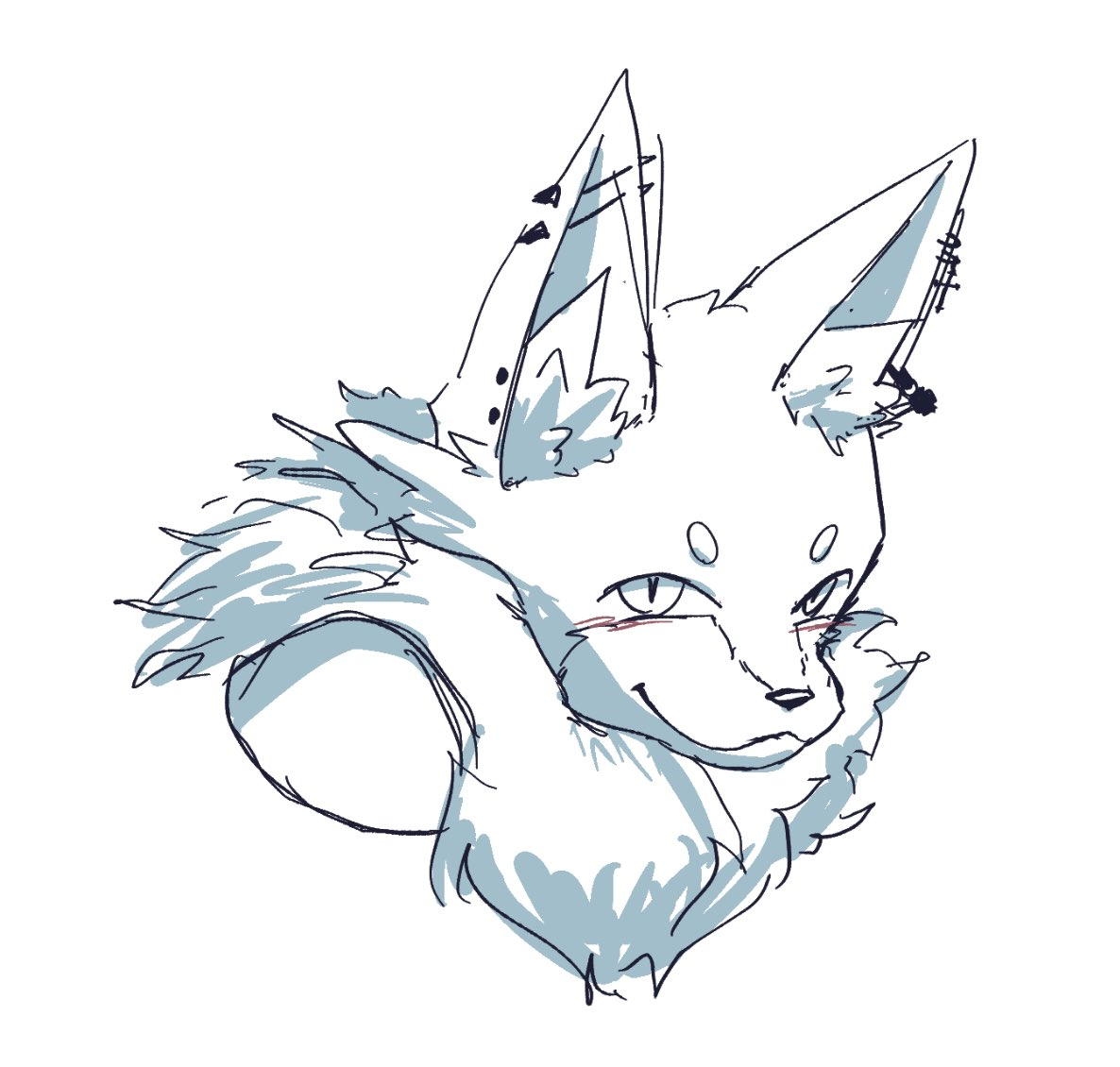I'm writing about the second orthography of Elnee language (オ゛ェジュルニョェーッ語), which is used in writing the language the most often.
- Wait, what is Elnee language? -> Then, I recommend you to check this out: Slaimsan togetters about the language.
Overview of Elnee Orthographies
First, Koloka, the original author of Elnee language, used IPA in the original tweet; we named the writing style the phonetic orthography. (But we usually call it "IPA description.")
The source of the second orthography is in Ziphil's tweet. the version which had made by redacting Ziphil's version, with phonemes added etc., is the present second orthography.
Now, there is three orthographies in the history of Elnee world:
- The first orthography uses Elnee ethnicity's own symbols. Though the second one is the most major, this is getting its status back in ethnic-reversionism movement.
- The second orthography was made when they became under the sway by a neighbor country, and uses Latin and Cyrillic alphabets mixedly. It is used the most often.
- The third orthography was used when they became under the sway of Soviet Union. It uses only Cyrillic alphabets.
Letters and Pronunciation
| Letters | Phonemes | L | P | L | P | L | P |
|---|---|---|---|---|---|---|---|
| ' | /ʔ/ | Kk | /q/ | Uu | /ɯ/ | Жж | /ʐ/ |
| Aa | /ɶ/ | Ll | /ʁ/ | Vv | /ⱱ/ | Мм | /n̼/ |
| Bb | /ʙ/ | Nn | /ɳ/ | Ww | /ɰ/ | Пп | /t̼/ |
| Cc | /c/ | Oo | /ɤ/ | Xx | /x/ | Фф | /θ̼/ |
| Dd | /ɖ/ | Pp | /ʙ̥/ | Yy | /ɥ/ | Чч | /t͡ɬʼ/ |
| Ee | /ø/ | /ɟ/ | Zz | /ɮ/ | Шш | /ʂ/ | |
| Gg | /ɢ/ | Rr | /r/ | Бб | /d̼/ | Ъъ | /qʼ/ |
| Hh | /ħ/ | Ss | /ɬ/ | Гг | /ð̼/ | Ƣƣ | /ʕ/ |
| Ii | /y/ | Tt | /ʈ/ | Дд | /tʼ/ |
The orthography uses 35 letters: 23 Latins (removed f, j and m from the 26 basic ones), 10 Cyrillics, ' and ƣ.
What on Earth is Ƣ?
Ƣ is a Latin letter which was used in several languages historically. In the world we live, it is obsolete now...
The letter Ƣ was used in the Latin orthographies of various, mostly Turkic languages, such as Azeri or the Jaꞑalif orthography for Tatar. It was also included in the pinyin-based alphabets for Kazakh and Uyghur and in the 1928 Soviet Kurdish Latin alphabet. It usually represents a voiced velar fricative but is sometimes used for a voiced uvular fricative. All orthographies that used the letter were phased out, and it is not supported in all Latin fonts. It can still be seen in pre-1983 books published in the People’s Republic of China.
Being the initial of "Ƣeznē'bix" (/ʕøɮɳøːʔʙyx/), which means "Elnee language", it is a symbolic letter of the language.
Here is м, But m is Not...?
The letter which stands for /n̼/ is not Latin m but Cyrillic м. Many of the letters being Latin ones, why Cyrillic м is used? ...We have a proper reason.
In the history, when the orthography was made, not м but m was actually adopted.
Ш is used, too, being like ɯ in quick script. It may be difficult to distinguish it from m.
So they used a form like м on purpose to avoid the undistinguishability, the м was established as a Cyrillic before they knew it.
(In our language constructing, the reason is that we added linguolabials with their letters Cyrillics; the setting above was made later.)
Is ƣ Same as f?
In Elnee world, ISO 639 code of Elnee language (= Ƣeznē'bix) is fez.
ISO 639 is a standard by the International Organization for Standardization (ISO) concerned with the representation of languages and language groups. It currently consists of four sets of code, named after each part which formerly described respective set ; a part 6 was published but withdrawn. It was first approved in 1967 as a single-part ISO Recommendation, ISO/R 639, superseded in 2002 by part 1 of the new series, ISO 639-1, followed by additional parts. All existing parts of the series were consolidated into a single standard in 2023, largely based on the text of ISO 639-4.
In fact, the reason is that ƣ is ff in transciption to basic Latins (confending beforehand); but we also have proper reason in Elnee world.
It is the premise that ƣ appears very frequently in Elnee language: first-person copula prefix "ƣi-," the initials of interrogative words, "ƣaqē'" which means "person," "Brxōdƣez?!" which means "Hello!," etc.
Once a typewriter for Elnee language was made, based on the general QWERTY layout. They wondered where to put Ƣ, which isn't in basic Latins; it appearing so frequently, it would be good to put it on a place to type easily. ...F's position was unoccupied!!! thus Ƣ was put on the position instead of F.
Though Elnee typewriters were minor in non-Elnee-speaking countries, it wasn't quite needless to write Elnee texts. So alternative writing system to type Elnee by common-layout typewriters appeared. Instead of Ƣ, it was used that F, which is on the same key position.
...Since then, it has been just as you think.
Want to Type Texts in the Orthography II!
Tentatively I made a page to convert texts to Elnee second orthography: Elnee keyboard β
Being β-version, it isn't sure to work, but it should be some useful. (It has stack of issue to solve; I'll do it when I can afford the time...)
Reported by Xirdiм-Tшtāsalozotnic Шweчeфīrƣez Edalg /xyrɖyn̼ ʈʂʈɶːɬɶʁɤɮɤʈɳyc ʂɰøt͡ɬʼøθ̼yːrʕøɮ øɖɶʁɢ/ (my Elnee name; quite difficult to pronounce), from Elnestan.






人気順のコメント(10)
お、英訳版だ。(オエル訳版も欲しみ
あ、全訳してから公開しようとしたのに誤爆した()(まあいっか
(公開前にポップアップ出るやつの実装、なるはやで希望
@a_i だそうです
はい(はい)
ところでオエル語はまだConlang Portalにないですね
たしかに @halka_ffez
確かに(あのユーザと作成者が分離していない仕様というかUXがが面倒すぎて正規始動してから(ユーザ)登録しておらんというのがある(何度目の提題か
↑これ、今からでもなんとかならんもんなん?
@ziphil
一応全部訳した()